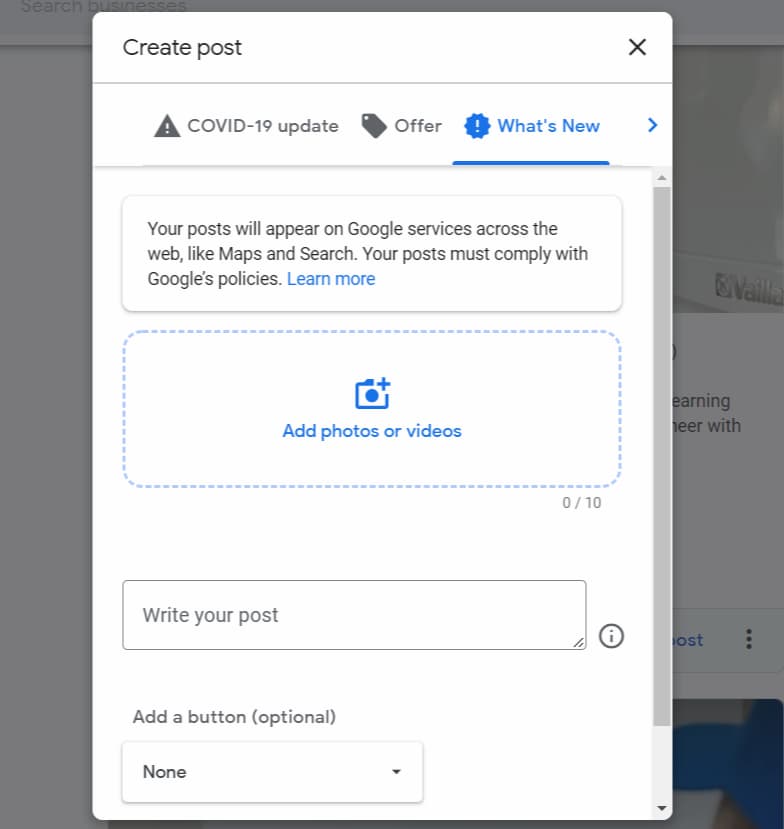
Optimising your Google Business Profile (previously Google My Business) is essential for better visibility in search results, with the main aim of appearing in the local pack (3 pack).
In our previous article we covered the basics of getting your Google Business Profile into shape:
Note: Together with the name change from Google My Business to Google Business Profile, the way you manage this is going to be slightly different. If you have been paying attention to your notifications, Google is trying to get you ready to manage your profile in Search & Maps.
So the following images will be from the new search and maps interface, we may as well start getting used to it.
Finding your Business Profile
In the new search and maps you can either search your business name or search for: my business, which will show you the profile.

Your main profile information is located in: Edit Profile
Posts, Products, Offers is located in: Promote
Reviews, Message, Q&A is located in: Customers
Optimising your Google Business Profile
For this walk through we are assuming you have already completed all the basics required with your profile from previous article. This article focusses on optimising rather then getting your profile completed.
Category
This is probably the most important thing to get right and also dependant on your own particular business.
Primary Category:
- Gas Engineer
Secondary Categories
- Central heating service
- Gas installation service
- Heating contractor
If you mainly deal with boiler repair and service, your primary category would be better suited as: central heating service, with gas engineer moving into the secondary category.
Service Area
Your instinct when listing your service areas is to cast your net far and wide – Don’t!
Google states not more than 2hours drive form your location. Yes they know your location because you added an address to have the profile verified. You are going to have a lot more success concentrating on a few refined locations, rather then a wider location where you are diluting the signals.
We will cover location landing pages in another edition focussing on optimising your website.
What tends to work best when choosing service areas, is:
- The area your address is in
- Next expand to neighbouring area
- And depending on the county size, the county or another neighbouring area

Services
You can provide additional information to services, which are segmented by your chosen categories. These services are also highlighted to users in the form of a Provided rich snippet.
Fill these in as to what you provide.

Note: Google will also add services based upon what they find on your website, sometimes these are nonsensical, so it is recommended to check for any updates regularly and remove if they don’t make sense.
Products
Products are not a ranging factor at the moment BUT they do provide a visual impact to users direct in search.
Note: Products are displayed back to front from the order they are added, so plan this out, so your main product is displayed prominently.
Example:
- Boiler Servicing
- Boiler Repairs
- Boiler Installations
- Emergency Gas Engineer
Emergency Gas Engineer would be the main displayed product as it was added last, followed by Boiler Installations.

Posts
Google Posts are not a direct ranking factor BUT what they provide is:
- Opportunity for Post Snippet relating to Search Query
- Context for Machine Learning
Your post should provide a title, followed by some expanded information and a call to action.
Title: New Baxi Boiler Installed in XYZ Location
This includes boiler type and expanding on location understanding.
Body:
Expand your information on the type of boiler installed (any reasons why this one ) how long it took.
Image:
Nice image of new boiler installed.

Posts could also include reminder of boiler servicing before Winter or Summer Offer on servicing.
Lastly
Our next instalment of getting your business found online will look at the basics of optimising your business website. This article and training was kindly provided by our current local SEO consultant at Viva Training Centre.
Related Articles
- Google My Business for Plumbers & Gas Engineers
- Is It Better to Be Self-Employed or Work For a Company?
- Should I Become a Heat Pump Installer?
- Retrain as a Gas Engineer
- Gas & Heating Business Name Change Checklist

